Quebrada de La Tuna is a small, yet important petroglyph site in the Sihuas Valley of southern Peru. As early as 1977 Cuban archaeologist Antonio Núñez Jiménez visited the site and recorded several boulders with petroglyphs. This present study re-describes the site, offering updated information about the rock art (based on our survey of 2008), also explaining the position of Núñez Jiménez.
By Maarten van Hoek
*
*
*
Quebrada de La Tuna
A Rock Art Site in Southern Peru
*
Revised August 2023
*
Maarten van Hoek
*
*
*
Hyperlinks are in blue and underlined
Click any illustration to enlarge
Introduction
Quebrada de la Tuna is a relatively small, yet contextually important petroglyph site in the valley of the Río Sihuas in the Department of Arequipa, southern Peru (Figure 1). It is located 67 km inland, northeast of the village of Quilca, where the Río Vítor-Quilca empties its waters into the Pacific Ocean. The site is found in the desert and in a very small side-valley – just west of the Río Sihuas (valley floor at about 1580 m asl) – at an average altitude of about 1640 m asl (thus roughly 60 m above the valley floor). Despite its elevated position there are only very limited views because higher hills block the views in every direction. The small and anthropically much disturbed boulder field at Quebrada de la Tuna roughly measures about 150 m north-south, by 50 m east west, which is small compared with the nearby major rock art site of Quilcapampa. The northern tip of this 1840 m long petroglyph site is only about 1800 m south of Quebrada de la Tuna.
Figure 1: Map of western Arequipa, Peru, showing the location of Quebrada de la Tuna and a selection of important rock art sites in this area. Drawing © by Maarten van Hoek; map © by OpenStreetMap – Contributors.
*
Previous Publications
In the publications about Arequipa rock art that I have available there is no mention at exactly what date the rock art site at Quebrada de la Tuna was first recorded. Linares Málaga briefly describes the site (1981: 770), but only mentions that the site was already known before his 1981-visit (possibly as early as 1966; see also Linares Málaga 1979). Confusingly, Jean Guffroy (2009: 353) writes that Quilcapampa la Nueva and Quilcapampa la Antigua and Quebrada de la Tuna (as if it concerns three names for one and the same site) were visited by Linares Málaga in 1973, but also by Hans Dieter Disselhoff in 1971. Actually Quilcapampa la Nueva and Quilcapampa la Antigua form just one (huge) site (Quilcapampa) and Quebrada de la Tuna is a different, much smaller site further north in the valley. It is thus uncertain whether also Disselhoff visited Quebrada de la Tuna when exploring the Sihuas Valley.
It is however certain that – as early as 1977 – Cuban archaeologist Antonio Núñez Jiménez visited the site and recorded several boulders with petroglyphs (1986: 535 – 540). On his map (1986: Fig. 2758) he marks 13 boulders (numbered 1 to 16, without, however, marking Boulders 6 and 7 and 14). Unfortunately some of the captions of his (only) 12 drawings of the petroglyphs are confusing and sometimes incorrect, as I will demonstrate. Moreover, in general many of his drawings, maps and captions (up to 25%) are inaccurate, incomplete and/or incorrect, as I have revealed earlier (Van Hoek 2011: 136 – 138). Núñez Jiménez ascribes the rock art to the local Chuquibamba Culture. However, I definitely refute this claim and ascribe the rock art to the Majes Culture, which had its powerful epicentre in the Central Majes Valley (Van Hoek 2018).
Also Rogger Ravines mentions Quebrada de la Tuna (1986: 17), but only by referring to Núñez Jiménez (1986), while Rainer Hostnig almost repeats the same information from Núñez Jiménez (2003: 57), together with an (inaccurate) drawing by Núñez Jiménez. Despite being located very closely, the site of Quebrada de la Tuna is not mentioned in the extensive book about Quilcapampa by Jennings et al. (2021), not even marked in their Figs 3.1 and 3.3 (although they mention the [rock art?] sites of Pitay, Sóndor, Tintín [Van Hoek 2017], San Basilo and Pampa de Timirán in the Sihuas Valley [Jennings et al. 2021: 92]). Finally, during a brief survey in 2008 my wife and I recorded a minimum of 17 boulders with petroglyphs in the small boulder field at Quebrada de la Tuna. The results of our survey at the site (yet not a full, scientific inventory) will be presented in this study.
*
The Petroglyphs
The only published “inventory” available of the petroglyphs of Quebrada de la Tuna, can be found in the book by Núñez Jiménez (1986). However, because his “inventory” is incomplete, sometimes incorrect and confusing, I decided to introduce my own numbering for the site. Boulders at Quebrada de la Tuna bearing petroglyphs are prefixed by TUN (TUN-001 etc.). In cases where a boulder has more than one decorated panel, a capital letter will appear after the number, for instance: Panel TUN-003B.
The site has been disturbed and partially destroyed because of the construction of a road through the boulder field, which was constructed to serve the water works that are going on in the Sihuas-Majes area (often destructive for rock art sites). Also a few boulders at Quebrada de la Tuna seem to have been displaced and/or damaged by those activities. Most – if not all – decorated boulders once got detached from and fell down from the outcrop cliff high above the site before being decorated. As usual there are many more undecorated boulders than panels with petroglyphs. And of course we may well have missed some decorated panels during our survey at Quebrada de la Tuna. No scales are available (see Núñez Jiménez 1986 for scales of several images) and only very approximately bearings and/or directions will be mentioned.
Located exactly 46 km due west of Quebrada de la Tuna in the Sihuas Valley is Majes, a valley “full” of rock art, housing – among many other important sites – also the biggest concentration of rock art in South America, Toro Muerto.
When describing a boulder or a panel, I will also discuss the problems that I have with the drawings and/or information supplied by Núñez Jiménez for each of his entries.
Boulder TUN-001: This boulder (Figure 2A) probably features the best known petroglyph of Quebrada de la Tuna. Because I could not locate the exact position of each boulder during the 2008-survey (I never used GPS), I now estimate (using a Google Earth Map of 2011) that this boulder is located at 813179.00 m E and 8203969.00 m S, at an altitude of 1636 m asl. An early photograph – dated 1981 – was published by Eloy Linares Málaga (1981: Fig. 12), who – probably because of an unintended mix-up with his own Fig. 11 – also labelled the figure as “Petroglifo que representa un venado, en Quebrada de la Tuna, Siguas.”. This indeed concerns an unintended mix-up, because in the text he refers to the image as – El motivo “espantapájaros” – “The Scarecrow Motif”, which is – in view of the Andean imagery – a most unusual (and in my opinion unsubstantiated) label.
The largest petroglyph is an anthropomorph surrounded by a few much smaller zoomorphs, a small arc and an object that may depict an isolated “Trophy” Head. The large anthropomorph (measuring about 250 cm in height) shows the “saluting” attitude (one arm drooping; the other arm raised). Importantly, it has a series of horizontal grooves across the thorax that well could represent “ribs” (Figure 2B). These horizontal grooves are not continuous, as suggested by Núñez Jiménez (1986: Fig. 2759: Figure 2A: inset), but end at a somewhat shallower, vertically arranged groove in the middle of the thorax that could represent the “spine” or rather, the “sternum”. Núñez Jiménez (1986: 535) refers to this figure as “hombre con vestido, adornado con rayas horizontales”, but I rather interpret the horizontal grooves as “ribs” (Figure 2B).
Figure 2A: Boulder TUN-001. Inset: Drawing of the petroglyphs after Núñez Jiménez (1986: Fig. 2759). B: Drawing of the anthropomorph (compare with the inset). Photograph and drawings © by Maarten van Hoek.
Interestingly, as early as 1981 also Linares Málaga (1981: 770) wrote “se observa claramente seis costillas, el ombligo y la garganta muy bien diseñadas.”. Because of the “costillas” (the “ribs”) and the “sternum”, I have suggested that this figure represents a “Carcancha”; an important icon in Arequipa rock art, depicting life-death symbolism related to the regionally revered Apus, the Sacred Mountains of the area (fully discussed and explained by me earlier; see Van Hoek 2013, 2018, 2019 and 2020c). Yet I doubt whether indeed the throat has been indicated, as claimed by Linares Málaga, but his interpretation of a “navel” may well be correct. However, the small, oval hole (highlighted in red by me in Figure 2B) at the lower end of the “spinal” groove could equally represent or symbolise a “vulva”, in that case possibly portraying a female figure rather than an “hombre”. See also Boulder TUN-006 (and possibly TUN-007 as well) and more similar “Carcancha” petroglyphs at nearby Quilcapampa (Van Hoek 2021) and beyond (Van Hoek 2013).
The petroglyphs reported by Núñez Jiménez (1986: Fig. 2760; see Figure 18A), said by him to be on the south facing panel of Boulder TUN-001, could not be found by us; not on the south facing panel of Boulder TUN-001 and neither on any other boulder at Quebrada de la Tuna. Moreover, the petroglyphs reported by Núñez Jiménez (1986: Fig. 2761; see Figure 10: inset), said by him to be on the NE facing panel of Boulder TUN-001, were located by us on a completely different boulder (see TUN-010; see Figure 10).
Boulder TUN-002: This very large boulder has three decorated panels and was located (in 2008) to the east of the path leading to the modern water-work constructions. None of those three panels were recorded by Núñez Jiménez in 1977. Panel A: On this east facing, much damaged panel are now incomplete (clearly broken-off) petroglyphs of possibly one or two (?) decorated zoomorphs and some minor markings (Figure 3). Panel B: This smaller panel is slightly damaged and bears some very faint, indeterminable petroglyphs. Panel C: On the opposite side is a large, rather smooth panel with one petroglyph of an outlined zoomorph that possibly represents a dog, a fox or some other species in the “howling” position (Figure 3). There might be one or two other, very faint zoomorphic (?) petroglyphs on this panel. It is possible that this boulder has a fourth panel, just possibly (though erroneously) registered by me in this study as TUN-015 (see Figure 15).
Figure 3: Boulder TUN-002, not recorded by Núñez Jiménez (1986). Photographs © by Maarten van Hoek.
Boulder TUN-003: This rather small boulder has two much sloping panels. Panel A: On the “south” facing side are two petroglyphs of outlined, internally decorated quadrupeds, most likely depicting “camelids” (Figure 4). However, both have a rather long, curved (feline?) tail hovering over the back. In this respect it is significant to note that the long tail of the left-hand animal is incorrectly drawn by Núñez Jiménez (1986: Fig. 2762). Interestingly, they are observing each other from very close-by. One animal seems to have a long, vertical line drooping from its (defaced) face. Núñez Jiménez drew the couple as if disputing “something” positioned between the two heads (a prey or some other kind of food). However, I could not detect that “something” in reality. Only the right-hand animal seems to have “something” attached to his face (including the long line). There are some more indeterminable petroglyphs on this panel, not drawn by Núñez Jiménez. Panel B: On the opposite side is a relatively more deeply executed petroglyph of an outlined and internally dotted quadruped; a “camelid”? (Figure 4). The animal is looking to the right, whereas Núñez Jiménez (1986: Fig. 2763) incorrectly draws the animal as if looking to the left. This boulder lies immediately to the east of Boulder TUN-004.
Figure 4: Boulder TUN-003, Panels A and B. Insets: Drawings after Núñez Jiménez (1986: Fig. 2762 and 2763). Photographs and drawings © by Maarten van Hoek.
Boulder TUN-004: This is a very large boulder, slightly sloping to the “south or SE”, on which curls a long set of two parallel serpentine grooves (Figure 5). Núñez Jiménez (1986: Fig. 2764) calls the image a “figura serpentiforme”, but does not draw the irregular row of (faint) internal dots inside the body of the image that I – for that reason – consider to depict a snake. Moreover, Núñez Jiménez does not draw the right-hand end of the snake, which is visible (yet only faintly) at the very rough northern edge of the panel. It seems to depict a (rather large) head seen in bird’s-eye view (one small circular eye possibly discernible).
Figure 5: Boulder TUN-004. Inset: Drawing after Núñez Jiménez (1986: Fig. 2764). Photographs and drawing © by Maarten van Hoek.
Boulder TUN-005: On this large boulder are the very faint remains of a petroglyph that just possibly depicts an outlined zoomorph (possibly a feline). Also because of the rough and weathered surface the layout could not be determined by me (Figure 6). It therefore might represent the petroglyph listed in this study as TUN-020 (Figure 6: inset).
Figure 6: Boulder TUN-005. Inset: Drawing after Núñez Jiménez (1986: Fig. 2767). Photograph and drawing © by Maarten van Hoek.
Boulder TUN-006: To the NW of Boulder TUN-001 is Boulder TUN-006 (not illustrated by Núñez Jiménez [1986]). On its much weathered surface are a few petroglyphs (Figure 7) that were almost invisible at the time of our visit, but that showed up more clearly in the photos when enhanced. On the left-hand part is a fully frontally depicted “skeleton-anthropomorph”, a “Carcancha”, with its right arm raised, while the other arm is drooping and just possibly holds a “Trophy” Head (this latter feature is most uncertain, though). It has a rectangular head with outlined ears, mouth and eyes. Its square body “clearly” shows at least five “ribs” on its left part and possibly the same number of grooves on the more weathered right-hand part. There are a few more – indeterminable – grooves (composing a zoomorph?) on this panel (to the right of the anthropomorph).
Figure 7: Boulder TUN-006. Photograph and drawing © by Maarten van Hoek.
Boulder TUN-007: A short distance to the “SE” of Boulder TUN-006 is another boulder with a square petroglyph comprising a few internal grooves. Remarkably, four grooves emerge from the sides of the square. Two grooves probably represent arms (one raised and one drooping) that are curved and end in three digits. The other two grooves (both straight, yet one rather short) emerge from the bottom of the square and also end in three digits. They may therefore represent legs. There is no head, however (a decapitated or unfinished anthropomorph?). Below one of the legs in a rather deeply carved rectangular spiral and a V-shaped element (Figure 8). This panel has not been recorded by Núñez Jiménez.
Figure 8: Boulder TUN-007. Photograph © by Maarten van Hoek.
Boulder TUN-008: Núñez Jiménez recorded this boulder (1986: Fig. 2765) with two much differing petroglyphs of zoomorphs that in my opinion both represent outlined and dotted felines (Figure 9). The larger is more deeply executed and is rather deeply patinated. It has been depicted in “twisted perspective”, which means that the body has been arranged laterally, while the face faces the observer. The smaller example is less deeply patinated and less deeply executed and may therefore be a later addition. Moreover, it has been fully laterally depicted.
Figure 9: Boulder TUN-008. Inset: Drawing after Núñez Jiménez (1986: Fig. 2765). Photograph and drawing © by Maarten van Hoek.
Boulder TUN-009: On a small, slightly sloping, upper surface of a very large irregular boulder are at least one square petroglyph (with some internal dots?) and a few more grooves that could be anthropic. This panel has not been recorded by Núñez Jiménez.
Boulder TUN-010: Núñez Jiménez erroneously recorded this boulder as the NE facing panel of Boulder TUN-001 (1986: Fig. 2761; Figure 10: inset). Moreover, he recorded only three petroglyphs of quadrupeds (all outlined and only one with internal dots and without the fully pecked head), while he missed the fourth (fully pecked) quadruped in the lower right-hand corner (arrow in Figure 10). He also misinterpreted a natural hole as a small circle in the largest animal. Just possibly there is a fifth zoomorph attached to the smallest animal.
Figure 10: Boulder TUN-010. Inset: Drawing after Núñez Jiménez (1986: Fig. 2761). Photographs and drawing © by Maarten van Hoek.
Boulder TUN-011: This boulder is located a very short distance south of Boulder TUN-004. On its “south” facing, almost vertical panel is the single, fully frontally depicted and outlined petroglyph of a quadruped that most likely represents a feline (Figure 11). It probably concerns the “feline” recorded by Núñez Jiménez (1986: Fig. 2770). However, he draws the image completely incorrect. Besides missing the fully laterally depicted head, he also overlooked the internal decoration and the outlined tail.
Figure 11: Boulder TUN-011. Inset: Drawing after Núñez Jiménez (1986: Fig. 2770). Photographs and drawing © by Maarten van Hoek.
Boulder TUN-012: On this much weathered boulder (Figure 12) is at least one zoomorphic petroglyph that may depict a (possibly backwards-looking) “camelid”. It is either filled with small dots or it may concern a fully pecked petroglyph. Below its hind leg is a circle that might represent a “Trophy” Head, because four parallel lines emerge from the purported “chin area” of the “head”, otherwise lacking all facial features, though. This panel has not been recorded by Núñez Jiménez.
Figure 12: Boulder TUN-012. Photograph © by Maarten van Hoek.
Boulder TUN-013: This boulder features one of the most interesting assemblages of petroglyphs at Quebrada de la Tuna. It bears a deeply carved image of a fully laterally depicted feline that is filled with interior decoration (mainly dots or cupules) and a circular eye and a mouth (Figure 13; see also the cover-photo). Also the single ear is clearly discernible. Hovering over the back of the feline are two large match-stick birds. All grooves seem to have been rather superficially scratched. Both birds have outspread wings and a short, but more deeply carved, diagonally arranged groove that represents the head. The triangular tail-end of the larger bird is either no longer visible or has been misinterpreted by Núñez Jiménez (1986: Fig. 2768).
Figure 13: Boulder TUN-013. Inset: Drawing after Núñez Jiménez (1986: Fig. 2768). Photographs and drawing © by Maarten van Hoek.
Boulder TUN-014: A complex, pecked pattern of joined segments (some having a possible dot or cupule) may in fact form a zoomorphic (serpentine?) image (Figure 14). This panel has not been recorded by Núñez Jiménez.
Figure 14: Boulder TUN-014. Photographs © by Maarten van Hoek.
Boulder TUN-015: A very large boulder (disturbed? in 2008 located just east of the path) has an incomplete petroglyph of a fully laterally depicted bird (only the legs seem to be missing). The single wing and the tail are clearly visible, as is the head with one eye from which two, long, slightly curved grooves run towards the neck (Figure 15). Those grooves have been interpreted as “tears” and are very common in zoomorphic and anthropomorphic figures in the Majes Rock Art Style (especially in Majes “Dancers”). Also this panel has not been recorded by Núñez Jiménez.
Figure 15: Boulder TUN-015. Photographs and drawing © by Maarten van Hoek.
Boulder TUN-016: On this irregular boulder are at least four petroglyphs of zoomorphs, one example (outlined, yet probably unfinished; Element 5 in Figure 16) not recorded by Núñez Jiménez [1986: Fig. 2769]). Petroglyphs 1 and 2 most likely depict felines; the species of Animal 3 is uncertain (a fox or a dog?). All three have internal decoration and have fully laterally been depicted (Figure 16). At the bottom of the panel may be another (zoomorphic?) petroglyph, also not recorded by Núñez Jiménez (Element 4 in Figure 16).
Figure 16: Boulder TUN-016. Inset: Drawing after Núñez Jiménez (1986: Fig. 2769). Photographs and drawing © by Maarten van Hoek.
Boulder TUN-017: On a smooth panel east of the path (2008) is a complex pattern of five (possibly six) grooves, each with a short hook at the end. Four such grooves emerge from a rather large pecked disc that is joined to an (incomplete?) circle. The whole may have been intended to represent an anthropomorphic figure (Figure 17).
Figure 17: Boulder TUN-017. Photograph © by Maarten van Hoek.
*
The next three entries concern petroglyphs allegedly recorded by Núñez Jiménez at Quebrada de la Tuna that we were unable to find (due to the recent disturbances?). Possibly they belong to another site in Peru recorded by Núñez Jiménez.
Boulder TUN-018: This group of petroglyphs (Figure 18A) is said by Núñez Jiménez (1986: Fig. 2760) to be on the south facing panel of Boulder TUN-001, but they could not be detected by us in 2008 on that panel or anywhere-else at the site. The petroglyphs may have been weathered (off?), or the panel sits on a completely different boulder, which we could not trace at Quebrada de la Tuna. The panel may as well belong to another site.
Boulder TUN-019: This single petroglyph (Figure 18B) on his Piedra 9, is said by Núñez Jiménez (1986: Fig. 2766) to be 10 m NNW of Boulder TUN-008 (which we could locate), but his Piedra 9 could not be detected by us in 2008 (possibly it represents a completely different boulder, or it is found at another site).
Figure 18A: Boulder TUN-018 and B: TUN-019. Drawings after Núñez Jiménez (1986: A: Fig. 2760 and B: Fig. 2766). Drawings © by Maarten van Hoek.
Boulder TUN-020: This single petroglyph (see Figure 6: inset) on his Piedra 10, is said by Núñez Jiménez (1986: Fig. 2767) to be 15 m ESE of Boulder TUN-020 (which we could not locate), but his Piedra 10 could not be detected by us in 2008 (possibly it represents a completely different boulder at this site [possibly even TUN-005; see Figure 6]).
The Difficulty of Interpretation
In this study it seems as if I severely criticise Antonio Núñez Jiménez for having published several omissions, inaccuracies and errors regarding his drawings and captions. Mind you, I am definitely not judging the person of Núñez Jiménez in any way. I realise that those errors are due to many circumstances, not the least because his investigations took place about 50 years ago. Núñez Jiménez achieved a tremendous job and his book is still extremely valuable. I admire him for his perseverance while meticulously surveying numerous rock art sites in Peru.
Yet I simply cannot accept (too many of) his illustrations as scientifically correct. There are too many errors, like incomplete images, inaccurate images and incorrect images in his book (numerous examples discussed in my 2011-book). An illustrative example is given in Figure 19. In my opinion, an original photograph is essential in order to be able to check the enhanced picture or the drawings. Thus an original photo should (must) be supplied when asked for.
Figure 19: Boulder PAL-025 at Palamenco, northern Peru, showing my unaltered photo (left) and my carefully enhanced photo, which now clearly shows the bird image (right), compared with (inset) the drawing by Núñez Jiménez (1986: Fig 985) (see also Van Hoek 2011: 68). Drawing and photographs © by Maarten van Hoek.
My only concern is that rock art researchers nowadays uncritically publish his drawings, as if they are correct. Therefore I strongly advocated (Van Hoek 2011) that it should be conscientiously avoided to uncritically copy and publish drawings by Núñez Jiménez without the warning that his drawings are incorrect in about 25% of all his illustrations. In my 2011-book (available on the internet as PDF) I have collected numerous examples of drawings that are incomplete, inaccurate or incorrect (and – after the publication in 2011 – I found many more examples). Please, be careful when publishing drawings by Núñez Jiménez!
Despite my 2011-book, some rock art researchers continue to publish drawings by Núñez Jiménez without mentioning that they could be or are incorrect. For instance, in 2016 academic archaeologist Augusto Cardona Rosas (2016) published an incorrect drawing (without a number or caption) by Núñez Jiménez (1986: Fig. 2158). Because of this case (and several other issues by other authors) I discussed the matter of publishing incorrect drawings in studies about (Andean) rock art (Van Hoek 2016) in which I advocated that any illustration published in any kind of rock art study should be scientifically correct (if not, the possible incorrectness should always be acknowledged). Yet, I do not blame Cardona Rosas. He may well have missed my 2011-book (which, moreover, is in English).
Yet there are more problematic issues. In a study about the rock art of Chillihuay (Arequipa – Peru) I demonstrated that several drawings in a paper published by academic archaeologists Daniel Chumpitaz Llerena and Maritza Rodriguez Cerrón (2014) are incorrect (Van Hoek 2014: Figs. 9 and 10; see also Figure 20). Yet, no reactions from their side. In my more general 2016-study about rock art illustrations, I argued again that several drawings by Daniel Chumpitaz Llerena and Maritza Rodriguez Cerrón (2014) are demonstrably incorrect (Van Hoek 2016: Fig. 1). Again, no reaction. Unfortunately, Chumpitaz Llerena and Rodriguez Cerrón re-published the same incorrect drawing in their video-chat (2020) and when alerted by me via another paper (Van Hoek 2020a: Figs 2A, B and C, 4A and B) and an email, they did not at all want to acknowledge that their drawings are incorrect. They intentionally ignored all my publications in this respect (in disrespect!) and in a very brief email they ridiculously “defended” their incorrect drawings simply as “freedom of speech” I again alerted the rock art community not to uncritically trust such “scientific” publications by Chumpitaz Llerena and Rodriguez Cerrón, but I fear that it will be in vain. After all, they are academics and I am not.
Figure 20A: Detail of the head of the Lord petroglyph, Chillihuay, southern Peru, according to Chumpitaz Llerena and Rodriguez Cerrón (2014). B: Detail of the same image, based on several photographs from the private photographic collection of Rainer Hostnig (2008). Drawings © by Maarten van Hoek (2016-2022).
*
Conclusions
This study proves that it is often essential to visit and revisit and to thoroughly re-survey rock art sites that have been investigated and inventoried in the past, simply because the situation has changed or because the earlier reports were incomplete or not accurate, sometimes including incorrect graphical material. Although my study of the rock art at Quebrada de la Tuna offers by no means a complete and scientific inventory, it must be concluded that the earlier recordings by Núñez Jiménez (1986) are often inaccurate and incomplete. Again, I do not at all blame him – because he was a dedicated and honest surveyor – for those errors. His erroneous graphic material is not a sign of intent. Importantly, I definitely do not have anything against him as a person.
In my survey of Quebrada de la Tuna I observed that a number of boulders with petroglyphs recorded by Núñez Jiménez have not been recorded by us. They may have been overlooked by us (being overturned?), or are no longer at the site (stolen?), or never existed at the site. On the other hand, we noticed some boulders that were not recorded by Núñez Jiménez in 1977 (which is completely understandable).
The imagery at Quebrada de la Tuna proves to be similar to many other rock art sites in the Sihuas Valley and beyond. It definitely belongs to the Majes Rock Art Style, as is evidenced by petroglyphs of (relatively many) felines, some birds (at least one with Majes-Style “tears” from the eye), camelids or “camelids”, foxes or dogs and at least one serpent. What makes Quebrada de la Tuna more interesting is the presence of two “Carcanchas” petroglyphs; life-death related icons that are definitely related with the venerated Apus – the Sacred Mountains of the area – (fully explained by me earlier; see Van Hoek 2013 and 2021). In case of Quebrada de la Tuna the Apu in question is the volcano of Ampato. It is now remarkable that such a small site has two “Carcancha” petroglyphs, while there are no wide views from the site. Ampato is not even visible (see my explanation regarding a similar situation at Quilcapampa, the most important rock art site in Sihuas, located only 2 km to the south; Van Hoek 2021: 85 – 89). The distribution of decorated rocks across the site is most irregular, although minor concentrations are recognisable (Figure 21).
Figure 21: View of the rock art site of Quebrada de la Tuna, looking west. Not all decorated boulders are visible in this photo. Photograph © by Maarten van Hoek.
*
Finally, I would like to emphasise again that Núñez Jiménez is not to blame for his graphical errors. There is no question of intent. However, in this study I demonstrated that certain archaeologists do not have any problem publishing incorrect graphical material – not even after having been alerted by me about that – and still continue either to re-produce that incorrect material, or maintain that their illustrations offer the correct renderings of certain rock art panels. In such cases there is question of intentionally misleading the readers of their publications.
I am much indebted to Rainer Hostnig for sharing with me numerous photos (not only of Chillihuay) and pieces of information about Andean rock art. Rainer also made available to me the 1986-book by Antonio Núñez Jiménez, which I used intensively over the past years. Last but not least I am grateful to my wife Elles for her assistance at Quebrada de la Tuna (and Quilcapampa) and for her ongoing support at home.
*
References
Although I have taken every care to correctly include all the publications (and the relevant URLs) to which I refer to in this study, it is always possible that (hopefully minor) imperfections still have been made by me or that omissions occur. Moreover, due to certain circumstances I had to delete and/or update some of my publications, some of which are being referred to in this study. I apologise for any inconvenience, if any of the URLs does not work (anymore). You may contact me, as I may be able to provide you with the information you may need.
Cardona Rosas, A. 2016. Huacas paqariscas y mitos: el viaje de los muertos. Grabados antropo-esqueléticos y fardos antropomorfos en el valle de Arequipa. En: Rupestreweb.
Chumpitaz Llerena, D. and M. Rodríguez Cerrón. 2014. Los Petroglifos de Chillihuay: La imagen antropomorfa (del formativo al período de integración Wari). In: Rupestreweb.
Guffroy, J. 2009. Imagénes y paisajes; rupestres del Perú. Editions IRD. Marseille, France; Universidad de San Martín de Porres, Lima, Perú.
Hostnig, R. 2003. Arte rupestre del Perú. Inventario Nacional. CONCYTEC, Lima, Perú.
Jennings, J., W. Yépez Álvarez and S. L. Bautista (eds.). 2021. Quilcapampa. A Wari Enclave in Southern Peru. University Press of Florida.
Linares Málaga, E. 1979. Nociones mínimas para conocer el Centro Arqueológico de Arte Rupestre: Toro Muerto. Arequipa, Perú. Visita guiada a Toro Muerto. Arequipa. In: Boletín de APAR – 2012. Vol. 2-7; pp. 485 – 490. Lima. Perú.
Linares Málaga, E. 1981. Evaluación de recursos histórico-arqueológicos del Proyecto Majes y área de influencia. Sector Siguas-Huacán. Informe Preliminar. Arequipa. Re-published in: Boletín APAR. Vol. 5 / 17-18; pp. 761 – 777 (not including all original illustrations). Lima. Perú.
Núñez Jiménez, A. 1986. Petroglifos del Perú. Panorama mundial del arte rupestre. 2da. Ed. PNUD-UNESCO – Proyecto Regional de Patrimonio Cultural y Desarrollo, La Habana, Cuba.
Ravines, R. 1986. Arte rupestre del Perú. Inventario general (Primera aproximación). INC. Lima.
Rodriguez Cerrón M. and D. Chumpitaz Llerena. 2008. Los Petroglifos de Chillihuay: Aproximaciones a su interpretación. Paper presented at the III Simposio Nacional de Arte Rupestre. Huaraz, Perú.
Rodríguez Cerrón, M. and D. Chumpitaz Llerena, 2020. Charla Rupestre: Los Petroglifos de Chillihuay. Arequipa, Perú. Video-chat at YouTube.
Van Hoek, M. 2010. ‘Trophy’ heads in the rock art of the Majes Valley, Perú: exploring their possible origin. In: Rupestreweb.
Van Hoek, M. 2011. Petroglyphs of Peru – Following the Footsteps of Antonio Núñez Jiménez. Oisterwijk, The Netherlands. Book only available as PDF at ResearchGate.
Van Hoek, M. 2013. The Carcancha and the Apu – Rock art of the ‘Death Valley of the Andes’. Oisterwijk, The Netherlands. Book only available as PDF at ResearchGate.
Van Hoek, M. 2014. The shaman, the lord and the warrior: anthropomorphic petroglyphs at Chillihuay, Arequipa, Peru. In: Rupestreweb.
Van Hoek, M. 2016. Sobre Dibujos de Arte Rupestre (Andino). Una Petición Para Sólo Publicar Dibujos Que Son Científicamente Sólidos. In: TRACCE – On-line Rock Art Bulletin.
Van Hoek, M. 2017. Los Petroglifos de Tintín, Sihuas, Arequipa, Perú. In: TRACCE – On-line Rock Art Bulletin, Italy. Linked with my video on YouTube.
Van Hoek, M. 2018. Formative Period Rock Art in Arequipa, Peru. An up-dated analysis of the rock art from Caravelí to Vítor. Oisterwijk, Holland. Book only available as PDF at ResearchGate.
Van Hoek, M. 2019. The Book of Bones – ‘Carcanchas’ in Global Rock Art. Oisterwijk, Holland. Book only available as PDF at ResearchGate.
Van Hoek, M. 2020a. Enfrentando los dibujos… ¡otra vez! (Perú); Confronting the Drawings … Again! (Peru). In: TRACCE – Online Rock Art Bulletin, Italy.
Van Hoek, M. 2020b. False Information Concerning Majes Rock Art, Peru. In: TRACCE – Online Rock Art Bulletin, Italy.
Van Hoek M. 2020c. New “Carcancha” Petroglyphs in Arequipa, Peru. Illustrating the “Road to Coropuna”. In: TRACCE – Online Rock Art Bulletin, Italy.
Van Hoek, M. 2021. Accessing the Inaccessible. Rock Art of Quilcapampa, southern Peru. Book only available as PDF at ResearchGate.
Van Hoek, M. 2022a. Vandalism and Falsification of Rock Art: A Matter of Integrity. In: TRACCE – Online Rock Art Bulletin, Italy.
Van Hoek, M. 2022b. The Majes Falsification Updated – The Inconvenient Truth. In: TRACCE – Online Rock Art Bulletin, Italy.
Van Hoek, M. 2022c. The Mislaid Beringa Petroglyph. A Missed Opportunity or a Misleading Missive? In: TRACCE – Online Rock Art Bulletin, Italy.

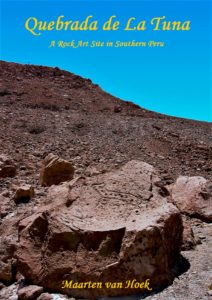
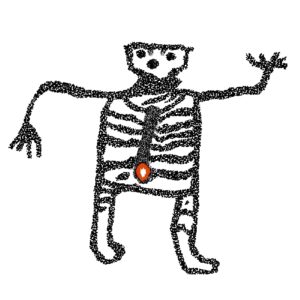
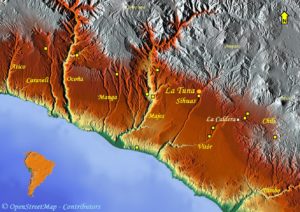
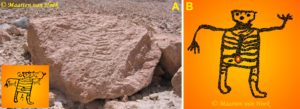
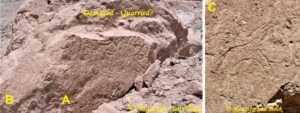

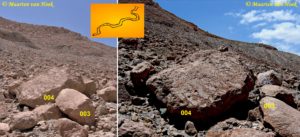
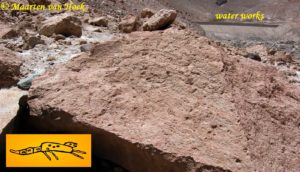

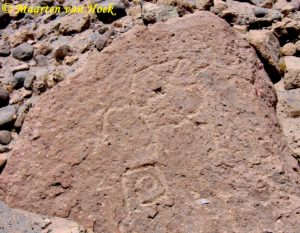
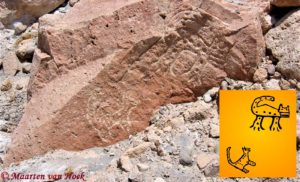
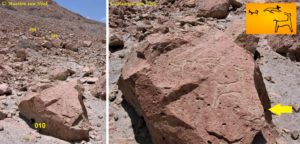
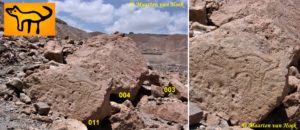
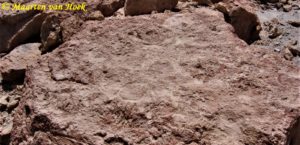

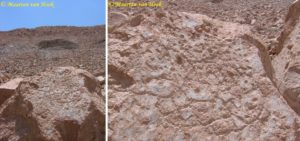
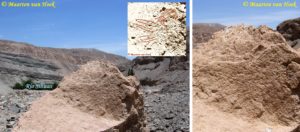
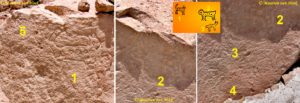
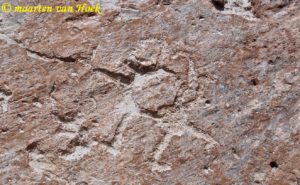

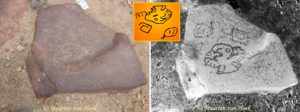
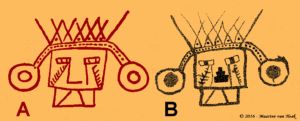
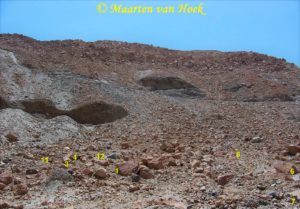














Leave a Reply